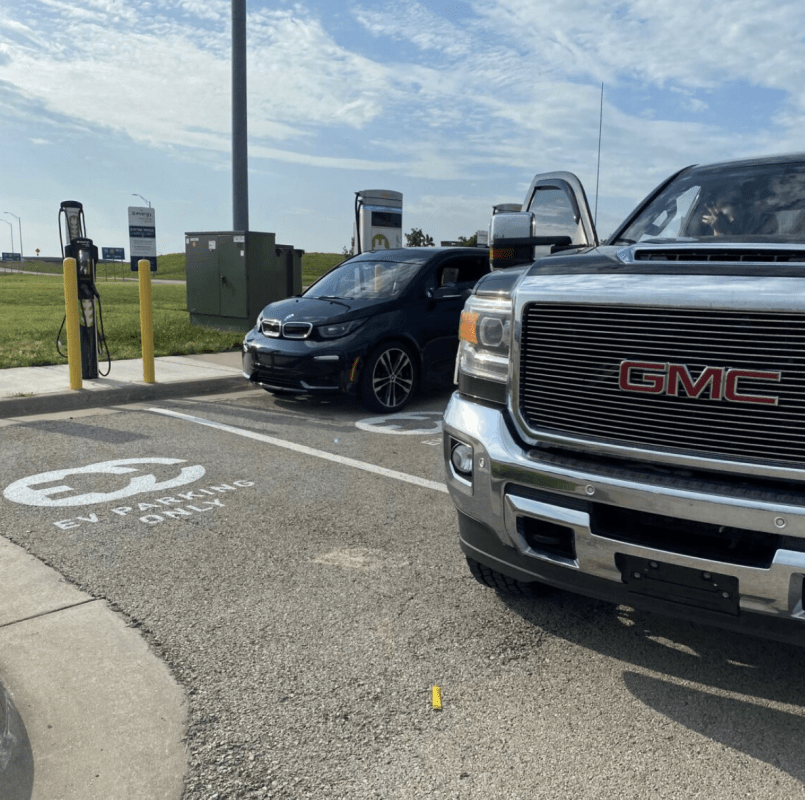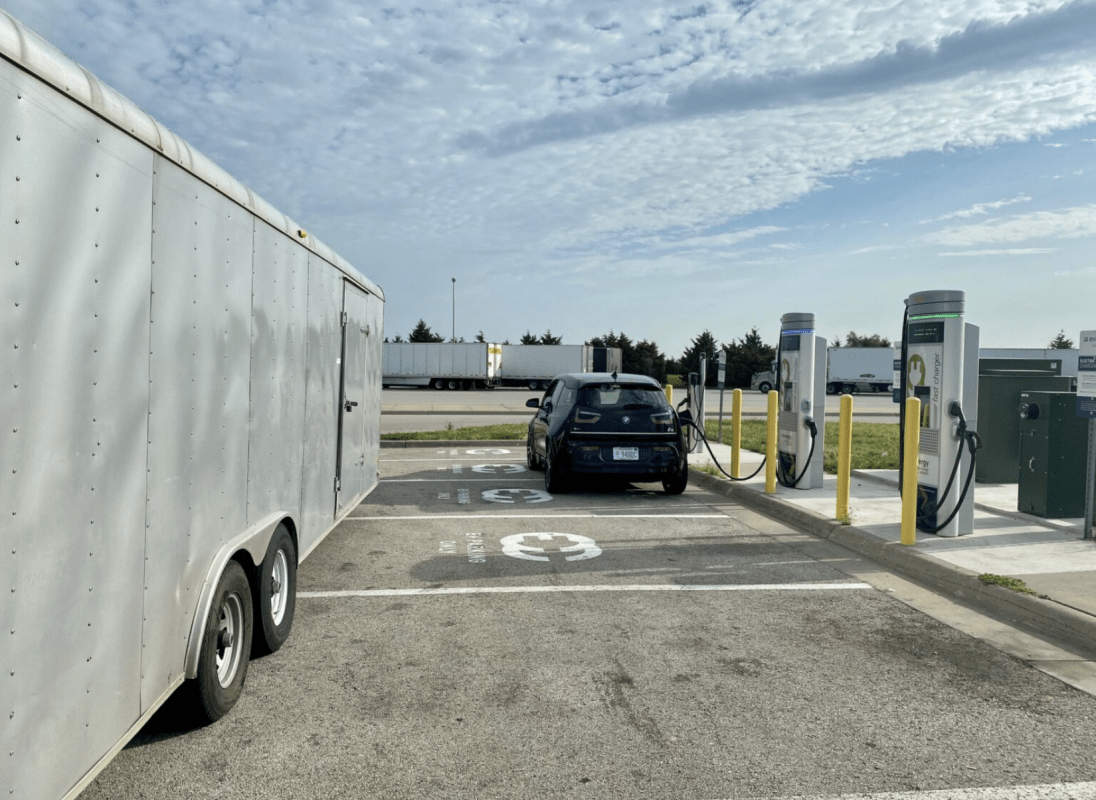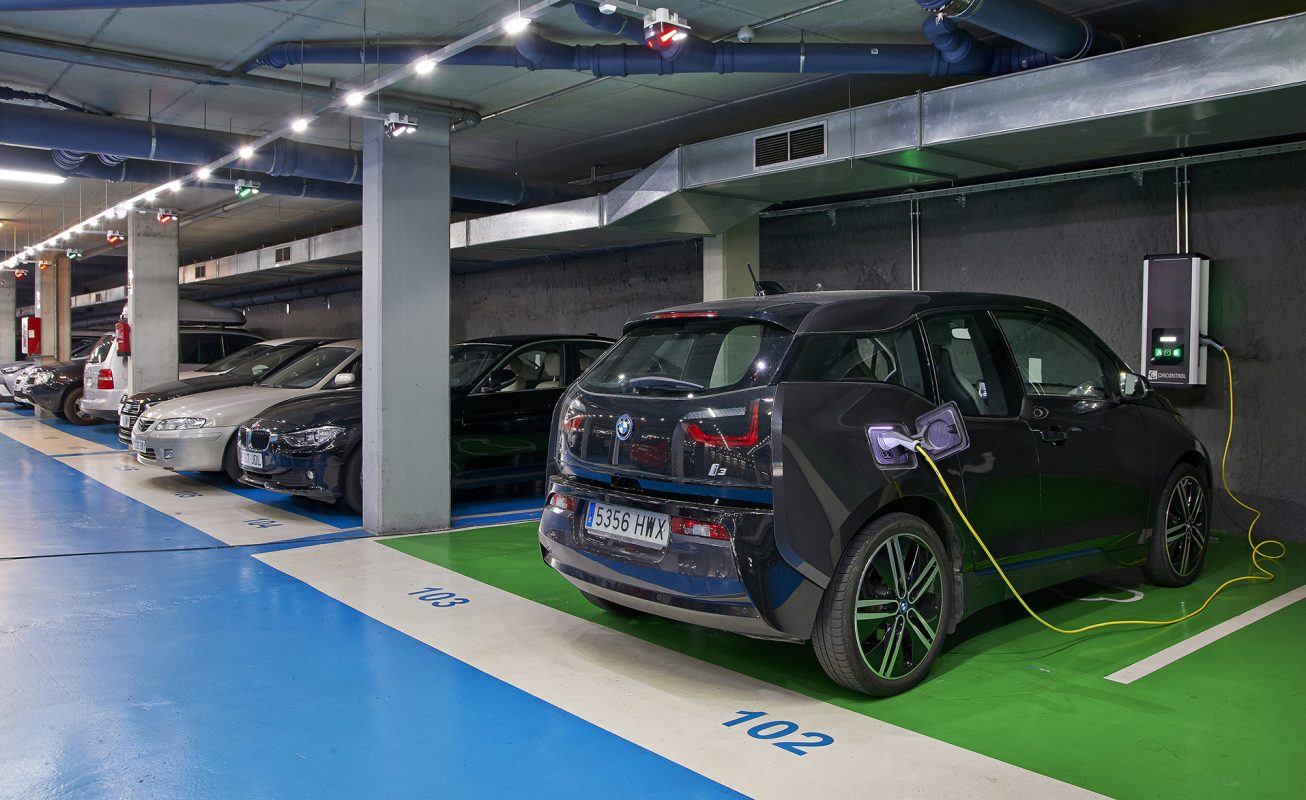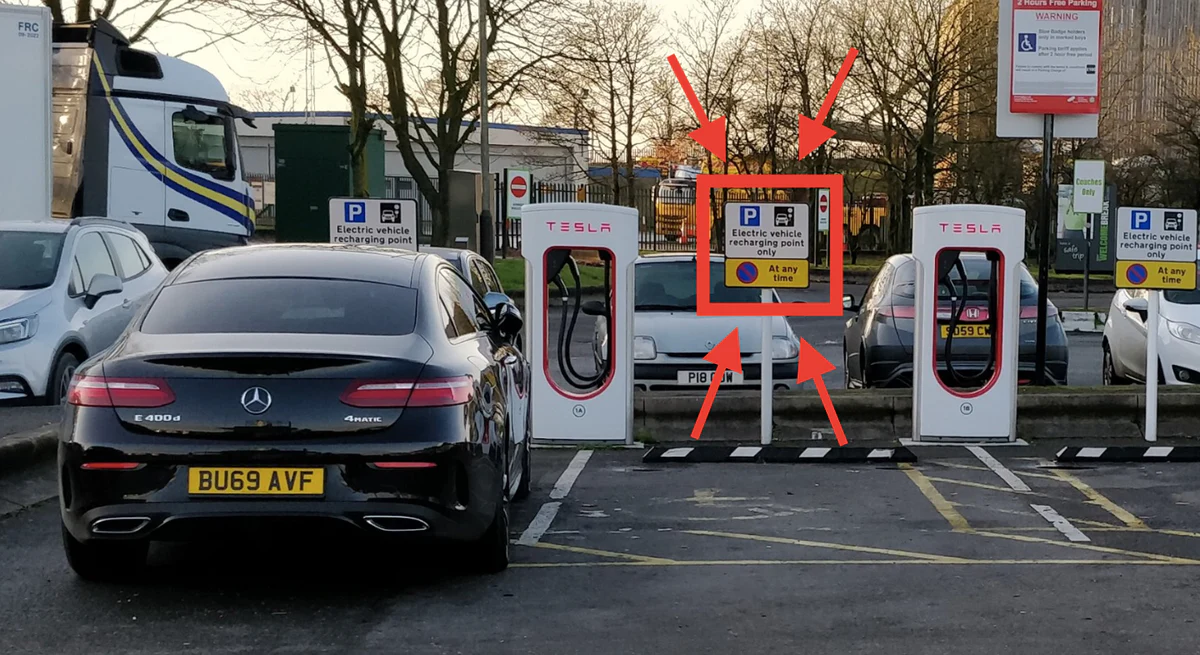What is ICEing?
ICEing is a common acronym used in the world of EVs. It describes when an Internal Combustion Engine (“ICE”) (=petrol or diesel) vehicle parks in an EV charging bay. Clearly the petrol/diesel engine doesn’t need to use the EV charger, so it’s commonly referred to as ICEing. Because it has BLOCKED or FROZEN the ability of an EV to use the charging equipment in that parking spot.
Why is ICEing a problem?
Well think of the flip side – an EV parking at a petrol pump at the petrol station and just leaving the car there while they go shopping. Inconsiderate, inconvenient, and just bloody well rude!
The impact for EV drivers is far worse than for petrol vehicles as there are far less EV chargers around in Australia than petrol stations. If EV charging spots get blocked, EV drivers no other option other than to wait if they are low on range. Since running out of charge means you just can’t drive anywhere!
Incredibly frustrating!

How and when did ICEing begin?
The phrase ICEing came about in around in the US when Tesla started building out supercharging stations, with multiple superchargers. These Tesla stations became convenient and easy spots for large semi-trailers and long-haul road trucks to pull over and park, as there weren’t too many EVs using them. And the same for large pickup trucks.
How does it feel when you’re ICEd?
If like me, you’re old enough to remember watching Seinfeld. That Parking Episode where George Costanza was so enraged about someone stealing his street parking spot he’d been circling for ages … well you can just imagine the potential confrontations that could occur with ICEing.
It happened to me not long ago in Canberra when I drove from Sydney to visit my daughter. I called the lovely hotel ahead to confirm EV charging availability. “Yes of course” said the concierge. But by the time I arrived at 5.30 pm, the hotel parking was almost full already. And all the EV charging bays were in use or filled. I politely asked at the front desk for them to notify me when the vehicles there had finished charging so I could charge my car. The response? Unfortunately we can’t do that – it just depends on when the guest moves their car. OK so can you let me know when they do that? Sorry, we won’t know when they move, it just depends.
OK, I get it. But to exacerbate the issue, there was a big event there that weekend. And not another single other parking spot in the entire parking basement. So those EV vehicles did not budge an inch, even when they had finished charging.

With no other choice, and needing to charge my car for the return trip to Sydney, I waited till then next morning. At 6.30 am on Sunday morning (when I should have been sleeping in on my weekend away), I snuck down to the basement to see if anyone had moved their EV so I could charge mine. Sadly no.
I did the only thing I could think of. Hop in the car and drive to the Tesla superchargers on the other side of Canberra to plug my car in. Fortunately, McDonalds nearby was open that early and I managed to get a coffee …. But not a great EV driver experience.
So how can we prevent ICEing?
EV Charging Bay Signage

Most EV charging bays are painted with EV charging signs and often painted green. So in theory you would think this should probably be enough to stop ICEing. Not just ICEing by petrol cars, but also overstays from EVs when they are no longer charging.
But when parking spaces are all full up around, and the ones free are these bright green ones signed “EV CHARGING ONLY” but they are sitting there empty when the rest of the parking is full all around … well signage alone is not going to be enough to prevent ICEing. Example in point, my experience at that Canberra Hotel recently.
Tesla – Idling fees and limiting charge capacity to 80%
Tesla Superchargers have not only labelled their bays for “active” charging only, but they have added an “idling fee” to their platform if your Tesla model occupies a parking spot without charging.
In addition, Tesla have the recently installed a feature to stop further charging at their superchargers once a vehicle reaches 80% charge – to provide better accessibility to EV charging distribution.
Unfortunately, this doesn’t work for conventional cars. Rather, it is up to the site location, local council or building where the EV charging bays are located to enforce ICEing issues. And this takes time and costs money. As well as causes frustration and angst. Which is only going to get worse with the rapid adoption of EVs.
CCTV and fines

Another company in the UK, Alpha Power, uses CCTV cameras to watch over EV charging bays, and issue fines to both ICE vehicles not charging and also EV vehicles not actively charging. It’s another world of EV charging management and enforcement.
While CCTV can police and enforce ICEing, it doesn’t prevent the problem from occurring.
Pre-book a reserved Electric Vehicle Charging Station
To avoid queuing up for charging, the fear of range anxiety, fines, and ensure a seamless EV driver journey, another solution is to have drivers pre-book of an EV charging bay that is secured with a smart parking bollard. This physical barrier ensures the EV charging spot not ICEd by someone just looking for a parking spot.
To do this, you not only need to know where available electric vehicle charging stations are, but whether they are in use or available.
Innovative Smart Bollard Solutions
We have a range of smart parking bollards that enable drivers to pre-book and reserve an EV charging bay for when they need it. And for peace of mind to know that it is physically secured by a smart bollard.
You can protect just one EV charging bay, or a number of them with our Parking Spotz system. Either as a standalone system, or integrable into your EV charging apps or building and facilities management platform.
And an admin can view it all from a dashboard.
Contact us at info@parkingspotz.com to learn more about our innovative parking bollard solutions. We can prevent EV charging bay ICEing, for residential and commercial strata buildings, offices and hotels.
The Rapid Adoption of EVs and EV Charging
ICEing is an unfortunate situation that EV drivers have to put up with. The impact on us can be from something of an inconvenience as mine, to a major problem when people do this more rampantly at charging locations.
It’s so important to think about this situation now as the rapid adoption of EV charging over the next few years will exacerbate the problem. So we’ll experience a higher pain point around EV charging bay ICEing. EV charging infrastructure will struggle to keep up with demand.
While politely asking often works, IMHO I think that an automated and seamless smart bollard solution is the way to go.
Have you been ICE’d? Let us know what happened to you!

Recent Comments